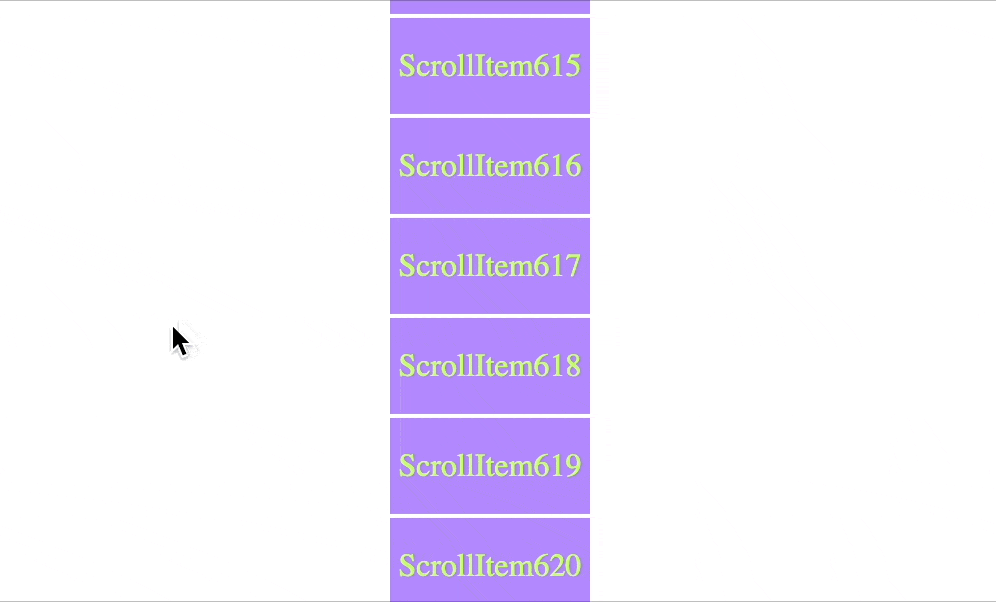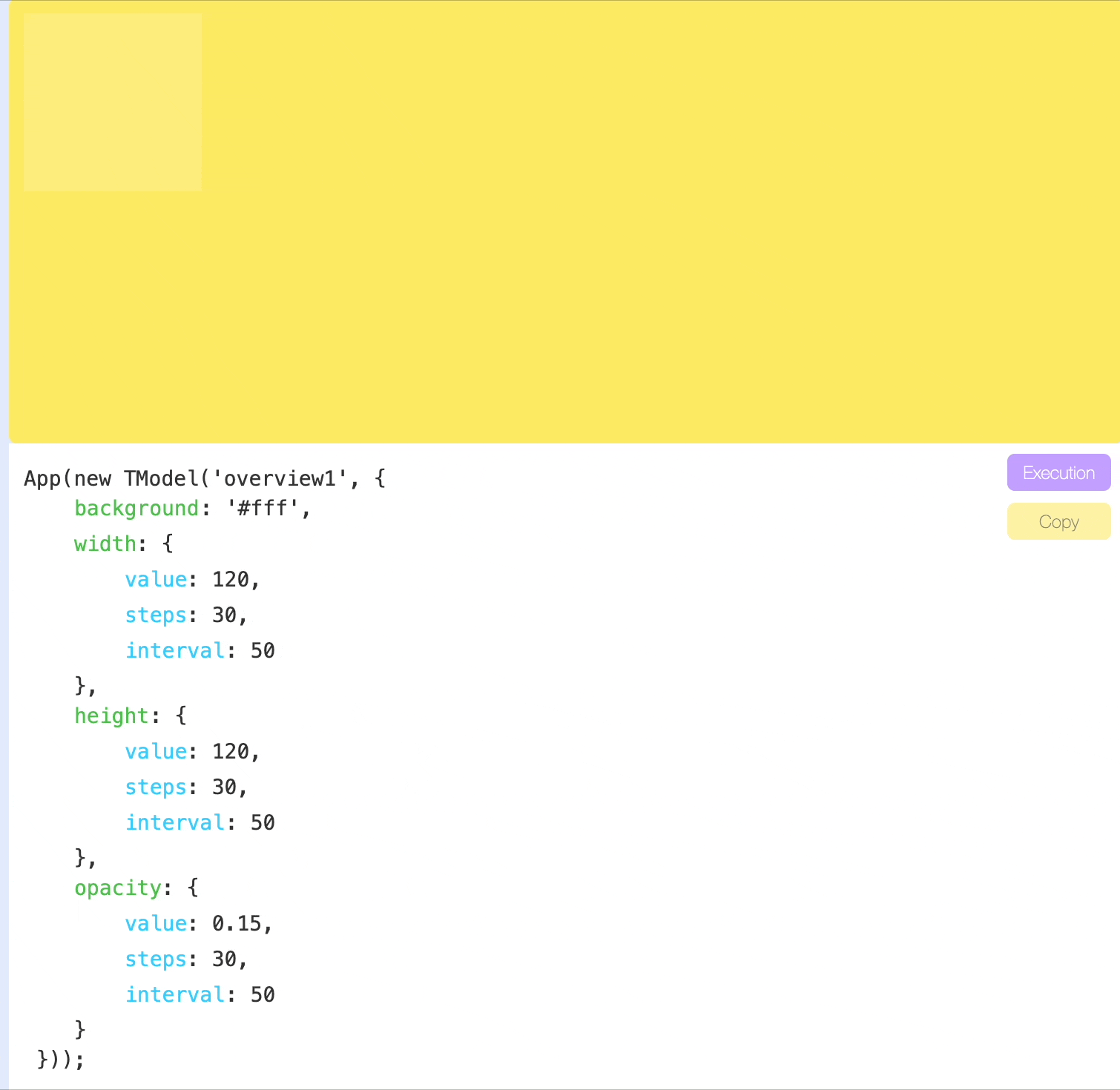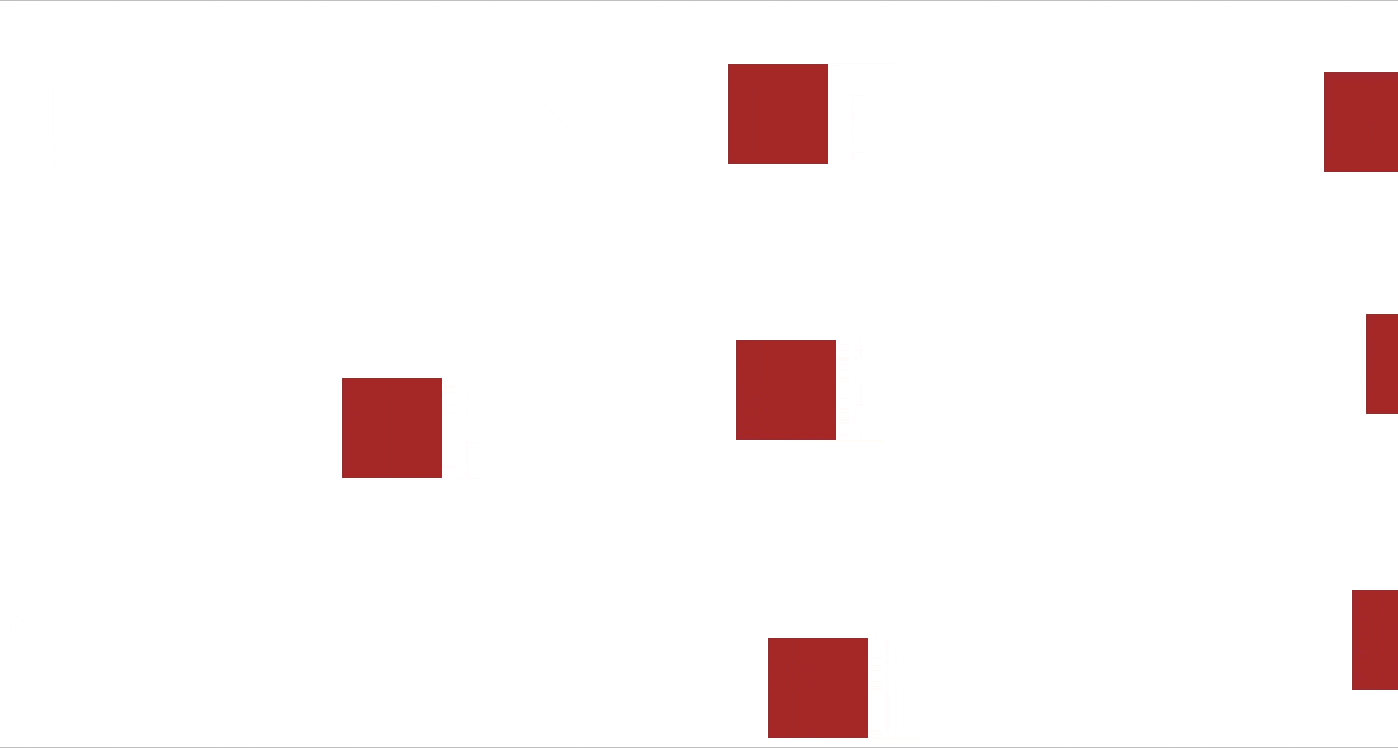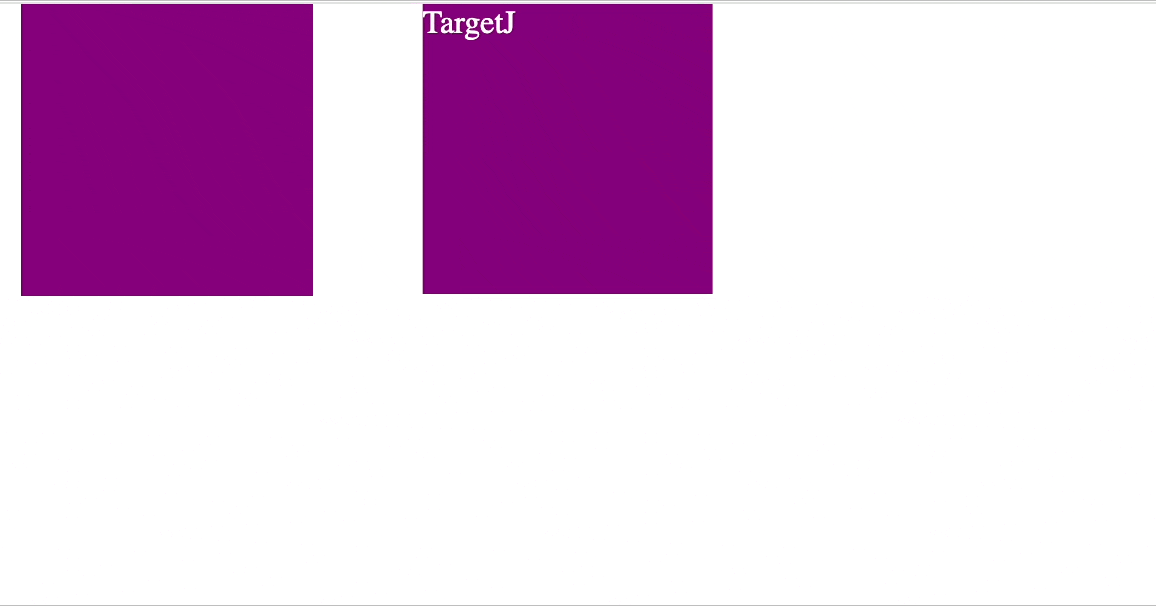gittech. site
for different kinds of informations and explorations.
New Paradigm in Front-End: Life Cycles to Methods and Variable Assignments

TargetJS: A Novel JavaScript UI Framework for Simplified Development and Enhanced User Experience
TargetJS is a modern JavaScript UI framework designed to streamline front-end development by introducing a unique computational paradigm centered around Targets. It offers a unified approach to UI rendering, animations, API interactions, state management, and event handling, leading to cleaner, more maintainable, and highly performant web applications.
What Problems Does TargetJS Solve?
TargetJS addresses several common pain points in front-end development:
Complexity of Asynchronous Operations: Traditional JavaScript often involves complex handling of asynchronous operations (Promises, callbacks,
async/await). TargetJS simplifies this by providing a structured, synchronous, and predictable execution flow, making it easier to manage timing and sequence.Scattered State Management: Many frameworks require separate libraries or complex patterns for state management. TargetJS unifies state management within its core concept of Targets, eliminating the need for external dependencies.
Boilerplate and Verbosity: TargetJS aims to reduce boilerplate code. It is compact and follows a predictable execution flow, executing in the order it appears in the code. It also minimizes the role of traditional HTML and CSS, allowing JavaScript to drive the user experience directly without the intermediate HTML step.
Disjointed Development Workflow: Developers often juggle multiple tools and concepts (UI libraries, animation libraries, state managers, event handlers). TargetJS provides a unified solution, simplifying the learning curve and development process.
Difficult Animation Control: TargetJS makes animations first-class citizens. Targets can iterate step-by-step towards new values, with built-in control over pauses and progression. This provides fine-grained control over animations without external libraries.
Reactivity Overhead: other frameworks are based on reactive model which might lead to unpredictable execution while TargetJS execution is based on the order targets are written.
Performance Bottlenecks with Large Lists: TargetJS optimizes rendering for large lists by internally using a tree structure. It monitors only the visible branch of the tree, leading to significant performance gains when dealing with extensive data sets.
Table of Contents
- Installation
- Key Features and Concepts
- New computational Model
- Examples:
- Comparison with Other UI Frameworks
- Anatomy of a Target
- How TargetJS Operates
- Target Methods
- More Examples:
- Simple Example
- Declarative and Imperative Targets Example
- Another Loading Data Example
- Animation API Comparison Example
- Simple Single Page App Example
- Using TargetJS as a Library Example
Installation
npm install targetj
Key Features and Concepts
Targets: The fundamental building blocks of TargetJS. Targets are like enhanced variables and methods with built-in lifecycles. They can:
- Iterate towards values (useful for animations).
- Execute conditionally.
- Self-activate and operate autonomously.
- Form synchronous execution pipelines.
- Manage their own state.
Deterministic Execution Flow: Targets are executed based on their activation order (initially, the order they appear in the code). This makes the flow predictable and easier to debug.
Unified Approach: Targets handle UI updates, API calls, animations, state, and events, reducing the need to learn and integrate multiple libraries.
Minimal HTML and CSS Reliance: TargetJS emphasizes code-centric development rather than relying on a static HTML layer. CSS styles can also be incorporated directly as targets.
High Performance: Optimized for large lists and efficient rendering.
Easy Integration: Can be used as a library within existing projects.
New computational Model
TargetJS introduces a unique paradigm by blending multiple computational models:
- Turing Completeness: Targets can execute continuously, conditionally skip execution, and modify values dynamically.
- Von Neumann Execution Model: Targets are executed based on their activation order, which initially follows the order they appear in the code. Targets cannot also be called directly. This makes the execution flow more predictable, easier to understand, and performant.
- Functional Programming: Targets can be composed to transform data in a pipeline-like manner, similar to functional programming. It also has ability to observe the execution of the preceding target. This keeps the pipeline execution again simple, easy to understand, and performant.
Examples
Quick example
This example shows a purple div that grows and shrinks, with proportional height adjustments and scaling. Notice the absence of external CSS and minimal HTML involvement.
- width: Animates from 100 to 250, then back to 100, in 50 steps with 10ms pauses.
- height: Calculates height proportionally based on width. The _ prefix indicates that it is inactive by default and must be activated externally to execute. The $ postfix means it is activated each time the width executes. this.prevTargetValue refers to the previous target's value.
- scale: Calculates scale based on height.
- onSwipe: Demonstrates event handling by updating the position based on swipe gestures.

import { App, TModel, getEvents } from "targetj";
App(new TModel('quickExample', {
background: '#B388FF',
width: [ { list: [ 100, 250, 100 ] }, 50, 10 ], // Target values, steps, interval
_height$() { return this.prevTargetValue / 2; }, // activated when the preceding target executes
_scale$() { return this.prevTargetValue / 50; }, // activated when the preceding target executes
onSwipe() {
this.setTarget({ x: getEvents().swipeX(this), y: getEvents().swipeY(this) });
}
}));
Simple Loading API Example
In this example, we load two separate users and display two purple div elements, each containing a user's name, based on the previous example.
- Children: Since the target name ends with $, it executes each time an API call returns a result. TargetJS ensures that results are processed in the same order as the API execution. If user1 arrives first, the children target will not execute. It will only run once the result for user0 has been received. If the target name ends with
$$, the children target will execute only after both API calls have completed. The results will be returned as an array, with user0 as the first element and user2 as the second. - Html: Initializes with the user's name. prevTargetValue refers to the result of the API call.
The execution pipeline then continues as in the previous example.

import { App, TModel, getLoader } from "targetj";
App(new TModel("quickLoad", {
loadUsers() {
getLoader().fetch(this, "https://targetjs.io/api/randomUser", {id: "user0"});
getLoader().fetch(this, "https://targetjs.io/api/randomUser", {id: "user1"});
},
_children$() {
return new TModel("user", {
html: this.prevTargetValue.name,
background: "#B388FF",
width$: [{list: [100, 250, 100]}, 50, 10],
height$() {
return this.prevTargetValue / 2;
},
onSwipe() {
this.setTarget({x: getEvents().swipeX(this), y: getEvents().swipeY(this)});
}
});
}
}));
Infinite Loading and Scrolling Example
We expand on the previous example to demonstrate an infinite scrolling application where each item dynamically triggers an API call to fetch and display its details.
- Children: Items are dynamically added to the container's children. The
onVisibleChildrenChangeevent function detects changes in the visible children and activates thechildrentarget to generate new items that fill the gaps. - Load: Since the target name ends with
$, it executes for every batch of 20 newly created children. TargetJS ensures that results are processed in the same order in which the APIs are called, rather than the order in which their responses are received. - Populate: Since the target name ends with $$, it executes only after all API calls have completed. It updates the content of each scrollable item with the name returned by the API.
TargetJS employs a tree-like structure to track visible branches, optimizing the scroller performance.
If you inspect the HTML elements in the browser's developer tools, you'll notice that the scroller’s elements are not nested inside the container. This is because nesting itself is a dynamic target that determines how elements are structured. This enables efficient reuse of HTML elements and unlocks new user experiences.

import { App, TModel, getEvents, getLoader, getScreenWidth, getScreenHeight } from "targetj";
App(new TModel("scroller", {
containerOverflowMode: "always",
children() {
const childrenCount = this.getChildren().length;
return Array.from({ length: 20 }, (_, i) =>
new TModel("scrollItem", {
width: [{list: [100, 250]}, 15],
background: [{list: ["#FCE961", "#B388FF"]}, 15, 15],
height: 48,
color: "#C2FC61",
textAlign: "center",
lineHeight: 48,
bottomMargin: 2,
x() { return this.getCenterX(); },
validateVisibilityInParent: true,
html: childrenCount + i
})
);
},
_load$() {
this.prevTargetValue.forEach(data =>
getLoader().fetch(this, "https://targetjs.io/api/randomUser", { id: data.oid }));
},
_populate$$() {
this.prevTargetValue.forEach((data) => this.getChildByOid(data.id).setTarget("html", data.name));
},
onScroll() {
this.setTarget("scrollTop", Math.max(0, this.getScrollTop() + getEvents().deltaY()));
},
onVisibleChildrenChange() {
if (getEvents().dir() === "down" && this.visibleChildren.length * 50 < this.getHeight()) {
this.activateTarget("children");
}
},
width: getScreenWidth,
height: getScreenHeight
}));
Comparison with Other UI Frameworks
| Feature | TargetJS | Reactive Model Frameworks |
|---|---|---|
| Component Basic Structure | Components consist of targets, which internally provide unified interface for methods and variables | Components consist of methods and variables |
| Execution Order | Targets are executed based on their activation order, which initially follows their appearance in the code. They run in a sequential and predictable manner | Execution is mainly driven by data changes and less predictable. |
| Function Calls | Functions (or Targets in TargetJS) cannot be called directly. TargetJS executes all active targets in sequence as part of its task cycle | Functions re-execute reactively when dependencies change or are imperatively called. |
| Flow Control | Execution is structured by a deterministic task cycle. No direct invocation, only activation | The flow is data-driven, and execution order depends on observed changes. |
| Autonomous Execution | Targets can self-activate and operate autonomously. | Functions do not execute autonomously. |
| Execution Pipeline | Targets can form a controlled execution pipeline, where a target can be activated when the preceding target in the code is executed. | Functions are called whenever dependencies update. Execution order is not based on code appearance. |
| Event Handling | Events in TargetJS are handled primarily by activating targets, making event handling consistent with the core execution model. | Events are handled through event listeners, subscriptions, or reactive bindings. |
| State Management | State is managed by targets, which provide a unified interface for both methods and functions, eliminating the need for external state libraries. | State is often managed through reactive stores. |
| UI Organization and Animation | UI is primarily controlled by targets, with styles incorporated directly within them. Animations are handled directly by targets, which iterate step by step towards new values and allow pauses between updates. | UI is updated via component-based rendering and reactivity. Animations are often handled via CSS transitions, imperative JavaScript animations, or external libraries. |
| HTML and Nesting | TargetJS minimizes the role of HTML and strives to make code the primary player in user experience rather than relying on a static HTML layer. HTML Nesting is managed as a target, making the structure dynamic, simplified, and only as deep as necessary**. | HTML structure is an integral part of UI frameworks. Components and templates define static layouts, and JSX, templates, or compiled HTML structures are used to organize UI elements. |
| CSS Handling | CSS is optional: Instead of relying on external stylesheets, styles can be incorporated directly as targets. This allows styles to be dynamically updated and easily accessible from the rest of the code. | CSS is usually handled through external stylesheets, CSS-in-JS (styled-components, Emotion), or Tailwind. Styles are often separate from logic. |
| API Calls | API calls can be chained together in a pipeline, where the bottom target is activated only when all API calls are complete. | API calls are usually handled with Promises, async/await, or reactive effects, which result in a less structured execution. |
Other Advantages of TargetJS:
Unified Approach for Development
Targets offer a unified solution for UI, animation, event handling, API calls, and state management, rather than working with multiple technologies, commands, and approaches. This simplifies development and makes TargetJS easier to learn.
Execution Control with Time
TargetJS enables developers to control the execution timing of targets, allowing for the sequencing and parallelization of numerous actions, which simplifies the development of complex UI behaviors.
High Performance for large Lists
TargetJS optimizes performance by internally building a tree structure where there is a long list of components. The TargetJS task cycle monitors only the visible branch of the tree, ensuring high performance of pages with large lists of UI items.
Enhanced User Experience
With its simplified and unified approach, eliminating the need for a static HTML layer and CSS files, along with the dynamic nature of targets, we believe TargetJS enables developers to focus on the user experience more than other frameworks.
Anatomy of a Target
Each target consists of the following:
Target Value and Actual Value. The target value refers to the value assigned to a variable or the output produced by the
value()method associated with the target defined in your program. The actual value is the value used by the rest of the application. When the target value differs from the actual value, TargetJS iteratively updates the actual value until it matches the target value. This process is managed by two additional variables:step, which dictates the number of iterations, andinterval, which specifies the duration (in milliseconds) the system waits before executing the next iteration.State: Targets have four states that control their lifecycles:
active,inactive,updating, andcomplete.active: This is the default state for all targets. It indicates that the target is ready to be executed, and the target value needs to be initialized from the variable it represents or itsvalue()method needs to be executed to calculate its output.inactive: Indicates that the target is not ready to be executed.updating: Indicates that the actual value is being adjusted to reach the target value.complete: Indicates that the target execution is finished, and the actual value has matched the target value.
Target Methods: All methods are optional. They are used to control the lifecycle of targets or serve as callbacks to reflect changes. The controlling methods are: enabledOn, loop, steps, cycles. The callbacks are: onValueChange, onStepsEnd, onImperativeStep, onImperativeEnd. More details in the method section.
How TargetJS Operates
All targets are in the active state by default and ready for execution unless explicitly set as inactive or their name is prefixed with an underscore (_). They can also include an enabledOn function that delays their execution until the specified conditions are met.
The target task monitors all active targets, and if a target is enabled, it will be executed. The target task executes active targets in the order they are defined in the program. The target value is generated either from the result of a method or from a static value defined in the target. For simple targets without steps, cycles, or loops, the actual value is set immediately based on the target value. Once executed, the target’s state becomes complete, and it will not be executed again.
If the target has loop or cycle methods defined, its value method will be re-executed. The number of executions will be determined by the cycles or will continue as long as the loop condition returns true. A pause can be inserted by setting the interval, which can be a fixed value defined as a property or dynamic, defined as a function.
If the target has steps defined, its state changes to updating, and the actual value is updated iteratively until it reaches the target value, according to the number of steps and pauses specified by steps and intervals.
A target can reactivate itself in the onStepsEnd callback once all steps are completed, or in the onImperativeEnd callback when all imperative targets initiated by that target are finished, allowing it to re-execute.
Targets can also be reactivated externally, either directly by calling activateTarget() or through user events.
Target methods
All methods and properties are optional, but they play integral roles in making targets useful for animation, API loading, event handling, and more:
value If defined, value is the primary target method that will be executed. The target value will be calculated based on the result of value().
active This is only property. It indicates that the target is in an inactive state and is not ready to be executed. It must be activated first, for example, by a user event, before it can execute. You can also prefix the target name with '_' to achieve the same effect as setting active to false.
onEnabled Determines whether the target is eligible for execution. If enabledOn() returns false, the target remains active until it is enabled and gets executed.
loop Controls the repetition of target execution. If loop() returns true, the target will continue to execute indefinitely. It can also be defined as a boolean instead of a method.
cycles It works similarly to
loop, but it specifies an explicit number of repetitions. It can also be combined withloop, in which case, once the specified cycles complete, they will rerun as long asloopreturns true.interval It specifies the pause between each target execution or each actual value update when steps are defined.
steps By default, the actual value is updated immediately after the target value. The steps option allows the actual value to be updated in iterations specified by the number of steps.
easing An easing function that operates when steps are defined. It controls how the actual value is updated in relation to the steps.
onValueChange This callbak is triggered whenever there is a change returned by the target method, which is called value().
onStepsEnd This method is invoked only after the final step of updating the actual value is completed, assuming the target has a defined steps value.
onImperativeStep
onImperativeStep(): This callback tracks the progress of imperative targets defined within a declarative target. If there are multiple imperative targets, this method is called at each step, identifiable by their target name. You can also useon${targetName}Stepto track individual targets with their own callbacks. For example,onWidthStep()is called on each update of thewidthtarget.
- onImperativeEnd
- Similar to
onImperativeStep, but it is triggered when an imperative target completes. If multiple targets are expected to complete, you can useon${targetName}Endinstead. For example,onWidthEndis called when thewidthtarget gets completed.
initialValue This is only property. It defines the initial value of the actual value.
activateNextTarget
This is a string property that specifies the target to be activated when this target executes. If the name ends with$, the target will only activate after the current target and all of its imperative targets have completed.Postfix
$to the target name
A target name ending with$indicates that it will be activated when the preceding target is executed or updated. It works similarly toactivateNextTarget, but it only applies to the target that appears next to it.Postfix
$$to the target name
A target name ending with$$indicates that it will be activated only after the preceding target and all of its imperative targets have completed. It works similarly toactivateNextTargetwhen it ends with$, but it applies only to the target immediately following it.this.prevTargetValue and this.isPrevTargetUpdated()
this.prevTargetValueholds the value of the previous target, whilethis.isPrevTargetUpdated()returnstrueif the previous target has been updated. This method is useful when a target is activated externally, such as by a user event, rather than by the preceding target.
More examples
Below are examples of various TargetJS use cases:
Simple example
In the example below, we incrementally increase the values of width, height, and opacity in 30 steps, with a 50-millisecond pause between each step. You can view a live example here: https://targetjs.io/examples/overview.html.

import { App, TModel } from "targetj";
App(new TModel({
background: '#fff',
width: {
value: 250,
steps: 30,
stepInterval: 50
},
height: {
value: 250,
steps: 30,
stepInterval: 50
},
opacity: {
value: 0.15,
steps: 30,
stepInterval: 50
}
}));
It can also be written in a more compact form using arrays (view a live example at https://targetjs.io/examples/overview2.html):
import { App, TModel } from "targetj";
App(new TModel({
background: '#fff',
width: [ 250, 30, 50],
height: [ 250, 30, 50],
opacity: [ 0.15, 30, 50]
}));
Declarative and Imperative Targets Example
Targets in TargetJS can be defined in two ways: declaratively or imperatively.
The declarative approach offers a structured method for defining targets, as seen in the previous example. However, orchestrating multiple targets with varying speeds and timings can be challenging. For instance, tracking the completion of multiple targets to trigger a new set of targets is not easily done using only declarative targets. To address this, TargetJS provides the setTarget function, allowing you to define multiple imperative targets from within a single declarative target. Additionally, the onImperativeStep and onImperativeEnd callbacks, defined in the declarative target, enable you to track each step of the imperative targets or just their completion.
By combining both declarative and imperative targets, you gain a powerful toolset for designing complex interactions.
The following example demonstrates both declarative and imperative approaches. In the animate target, two imperative targets are set to move a square across the screen. Once both x and y targets are completed, the animate target will re-execute because loop is defined as true, causing it to continue indefinitely. Additionally, we can add onImperativeEnd() to trigger when either the x or y target completes. We can also use onXEnd or onYEnd to listen specifically for the completion of the x or y target, respectively.

import { App, TModel, getScreenWidth, getScreenHeight } from "targetj";
App(
new TModel("declarative", {
children: {
loop() { return this.getChildren().length < 10; },
interval: 500,
value: () =>
new TModel("square", {
width: 50,
height: 50,
background: "brown",
animate: {
loop: true,
value() {
const width = this.getWidth();
const parentWidth = this.getParentValue("width");
this.setTarget("x", { list: [-width, parentWidth + width] }, Math.floor(30 + parentWidth * Math.random()));
this.setTarget("y", Math.floor(Math.random() * (this.getParentValue("height") - this.getHeight())), 30);
}
},
}),
},
width: getScreenWidth,
height: getScreenHeight
})
);
Another Loading Data Example
Calling backend APIs is simplified through the use of targets in TargetJS. It also provides a Loader class, as seen in the earlier example, which is accessible via getLoader().
In the example below, we define a target named load. Inside the value function, we make the API call using fetch(). The second argument specifies the API URL, and the third argument contains the query parameters passed to the API. A fourth optional parameter, omitted in this example, can specify a cache ID if we want to cache the result. This cache ID can also be used to retrieve the cached data. If it’s not specified, the result will always come from the API.
Once the API response is received, it activates the children target to create the user and add it to its children. Notice that prevTargetValue will have a different value in each occurrence.
- In the
heighttarget, it reflects thewidthvalue. - In the
lineHeighttarget, it reflects theheightvalue. - In the
htmltarget, it holds the retrieved user value, as it is not inside a function and takes the value fromloader.
You can also define onSuccess and onError callbacks in loader, which will be executed based on the result returned.

import { App, TModel, getLoader, getScreenHeight, getScreenWidth, Moves } from "targetj";
App(new TModel("apiCall", {
height() { return getScreenHeight(); },
width: 250,
load: {
interval: 1000,
cycles: 4,
value: function (cycle) {
getLoader().fetch(this, "https://targetjs.io/api/randomUser", { id: `user${cycle}` });
}
},
_children$() {
return new TModel("user", {
width: [120, 50, 30],
height$() { return this.prevTargetValue / 2; },
lineHeight$() { return this.prevTargetValue; },
html: this.prevTargetValue.name,
bottomMargin: 5,
rightMargin: 5,
textAlign: "center",
backgroundColor: "#B388FF",
overflow: "hidden"
});
}
}));
Animation API Comparison Example
TargetJS provides efficient, easy-to-control UI animation and manipulation through special targets that reflect HTML style names, such as width, height, scale, rotate, and opacity.
Below is a comparison between implementing animations in TargetJS versus using the Animation API. While the Animation API may still offer a slight performance edge, TargetJS comes very close.

import { App, TModel, getScreenHeight, getScreenWidth } from "targetj";
App(new TModel('compare', {
domHolder: true,
addAnimateChild() {
this.addChild(new TModel('animation', {
width: 150,
height: 150,
animate: {
value() {
var keyframes = [{
transform: 'translate(0, 0) rotate(0deg) scale(1)',
width: '80px',
height: '80px',
background: 'orange'
}, {
transform: 'translate(50px, 100px) rotate(180deg) scale(1.5)',
width: '120px',
height: '120px',
background: 'brown'
}, {
transform: 'translate(150px, 0) rotate(360deg) scale(1)',
width: '100px',
height: '100px',
background: 'crimson'
}, {
transform: 'translate(0, 0) rotate(360deg) scale(1)',
width: '150px',
height: '150px',
background: 'purple'
}];
return this.$dom.animate(keyframes, {
duration: 4000,
iterations: 1
});
},
enabledOn: function() {
return this.hasDom();
}
}
}));
},
addDomChild() {
this.addChild(new TModel('dom', {
color: 'white',
html: 'TargetJ',
setup() {
this.setTarget({ x: 200, y: 0, rotate: 0, scale: 1, width: 80, height: 80, background: 'orange' });
},
step1$() {
this.setTarget({ x: 250, y: 100, rotate: 180, scale: 1.5, width: 120, height: 120, background: 'brown' }, 160);
},
_step2$$() {
this.setTarget({ x: 350, y: 0, rotate: 360, scale: 1, width: 100, height: 100, background: 'crimson' }, 160);
},
_step3$$() {
this.setTarget({ x: 200, y: 0, rotate: 360, scale: 1, width: 150, height: 150, background: 'purple' }, 160);
}
}));
},
_restartOnBothComplete$$() {
this.getChild(0).activateTarget('animate');
this.getChild(1).activateTarget('setup');
},
width() { return getScreenWidth(); },
height() { return getScreenHeight(); }
}));
Simple Single Page App Example
Below is a simple single-page application that demonstrates how to build a fully-featured app using TargetJS. Each page is represented by a textarea. You’ll notice that when you type something, switch to another page, and then return to the same page, your input remains preserved. This also applies to the page's scroll position—when you return, the page will open at the same scroll position where you left it, rather than defaulting to the top.
You can now assemble your app by incorporating code segments from the examples on animation, event handling, API integration, and infinite scrolling provided above.

import { App, TModel, getScreenHeight, getScreenWidth, getEvents, getPager } from "targetj";
App(new TModel("simpleApp", {
width() { return getScreenWidth(); },
height() { return getScreenHeight(); },
menubar() {
return new TModel("menubar", {
children() {
return ["home", "page1", "page2"].map(menu => {
return new TModel("toolItem", {
canHandleEvents: "touch",
background: "#fce961",
width: 100,
height: 50,
lineHeight: 50,
itemOverflowMode: 'never',
opacity: 0.5,
cursor: "pointer",
html: menu,
onEnter() {
this.setTarget("opacity", 1, 20);
},
onLeave() {
this.setTarget("opacity", 0.5, 20);
},
onClick() {
this.setTarget("opacity", 0.5);
getPager().openLink(menu);
}
});
});
},
height: 50,
width() { return getScreenWidth(); },
onResize: ["width"]
});
},
page() {
return new TModel({
width() { return getScreenWidth(); },
height() { return getScreenHeight() - 50; },
baseElement: 'textarea',
keepEventDefault: [ 'touchstart', 'touchend', 'mousedown', 'mouseup' ],
boxSizing: 'border-box',
html: "main page",
onKey() { this.setTarget('html', this.$dom.value()); },
onResize: [ "width", "height" ]
});
},
mainPage() {
return new TModel({
...this.val('page').targets,
background: "#e6f6fb",
html: 'main page'
});
},
page1() {
return new TModel({
...this.val('page').targets,
background: "#C2FC61",
html: 'page1'
});
},
page2() {
return new TModel({
...this.val('page').targets,
background: "#B388FF",
html: 'page2'
});
},
children() {
const pageName = window.location.pathname.split("/").pop();
switch (pageName) {
case "page1":
return [ this.val('menubar'), this.val('page1')];
case "page2":
return [ this.val('menubar'), this.val('page2')];
default:
return [ this.val('menubar'), this.val('mainPage') ];
}
},
onResize: ["width", "height"]
}));
Using TargetJS as a Library Example
Here is an example that creates 1000 rows. The first argument, 'rows,' is used to find an element with the ID 'rows.' If no such element exists, it will be created at the top of the page. The OnDomEvent target activates the targets defined in its value when the DOM is found or created, eliminating the need for conditions to verify the DOM's availability before executing the target. Additionally, the parallel property creates subtasks, which improve browser performance.
The rectTop, absY, and onWindowScroll targets are used to track the visible rows during scrolling. TargetJS automatically divides a long list into a tree structure, efficiently managing only the visible branch. The onWindowScroll target updates the absY of the table, enabling TargetJS to identify the branch visible to the user. You can opt out of this algorithm by setting the shouldBeBracketed target to false.

import { App, TModel, $Dom } from "targetj";
App(new TModel("rows", {
isVisible: true,
containerOverflowMode: "always",
rectTop() { return this.$dom.getBoundingClientRect().top + $Dom.getWindowScrollTop(); },
absY() { return this.val('rectTop') - $Dom.getWindowScrollTop(); },
defaultStyling: false,
domHolder: true,
onDomEvent: ["rectTop", "absY"],
onWindowScroll: "absY",
createRows: {
parallel: true,
cycles: 9,
value() {
const childrenLength = this.getChildren().length;
Array.from({ length: 100 }, (_, i) => {
this.addChild(
new TModel("row", {
defaultStyling: false,
keepEventDefault: true,
height: 36,
width: [{ list: [100, 500, 200] }, 30],
background: "#b388ff",
canDeleteDom: false,
html: `row ${i + childrenLength}`,
})
);
});
}
}
}));
Special target names
All HTML style names and attributes are treated as special target names. The most commonly used style names and attributes have already been added to the framework, with the possibility of adding more in the future.
Examples:
width,height: Set the dimensions of the object.opacity,scale,rotate: Adjust the opacity, scale, and rotation of the object.zIndex: Sets the z-order of the object.
In addition to styles and attribute names, we have the following special names:
- html: Sets the content of the object, interpreted as text by default.
- style: An object to set the HTML style of the object, especially for style names that aren’t built-in.
- css: A string that sets the CSS of the object.
- baseElement: Sets the HTML tag of the object, defaulting to
div. - x and *y: Sets the location of the object.
- scrollLeft and scrollTop: Control the scrolling position of the object.
- leftMargin, rightMargin, topMargin, bottomMargin: Set margins between objects.
- children: Sets the
TModelchildren of the object. - domHolder: When specified, it designates the parent or any ancestor as the DOM holder for its descendants.
- domParent: Set by the container or children to control which DOM container they are embedded in.
- isVisible: An optional target to explicitly control the visibility of the object, bypassing TargetJS’s automatic calculation.
- canHaveDom: A boolean flag that determines if the object can have a DOM element on the page.
- canHandleEvents: An optional target that directly specifies the events the object can handle. If not specified, it will specified by event targets defined in the object (see below).
- widthFromDom and heightFromDom: Boolean flags to explicilty control if the width and height should be derived from the DOM element.
- textOnly: A boolean flag that specifies the content type as either text or HTML. The default value is false, indicating text.
- isInFlow: A boolean flag that determines if the object will contribute to the content height and width of its parent.
Lastly, we have the event targets which their values can be an array of targets to activate on specific events or may implement the event handler directly.
Example with Target Array:
onResize: [ 'width', 'height' ] // Activates declarative 'width' and 'height' targets on screen resize.
Example with Event handler:
onResize() {
this.setTarget('width', getScreenWidth());
this.setTarget('height', getScreenHeight());
}
Here are all the event targets:
- onResize: Triggered on screen resize events.
- onParentResize: Activated when the parent’s width or height is updated.
- onFocus: Triggered on focus events.
- onBlur: Triggered on blur events.
- onClick: Activated on click events.
- onTouchStart: Called when
touchstartormousedownevents occur. - onTouch: Generic handler for all touch events.
- onTouchEnd: Called when
touchendormouseupevents occur. - onSwipe: Activated on swipe events.
- onEnter: Triggered when the mouse cursor enters the object’s DOM.
- onLeave: Triggered when the mouse cursor leaves the object’s DOM.
- onScrollTop: Called on top scroll events.
- onScrollLeft: Called on left scroll events.
- onScroll: Called on both scroll events.
- onWindowScroll: Called on window scroll events.
- onKey: Triggered by key events.
- onVisible: Activated when the object becomes visible.
- onChildrenChange: Triggered when the children count changes.
- onVisibleChildrenChange: Triggered when the count of visible children changes.
- onDomEvent: It accepts an array of targets and activates them when their associated object acquires a DOM element.
How to debug in TargetJS
- TargetJS.tApp.stop(): Stops the application.
- TargetJS.tApp.start(): Restarts the application
- TargetJS.tApp.throttle: Slows down the application. This represents the pause in milliseconds before starting another TargetJS task cycle. It is zero by default.
- TargetJS.tApp.debugLevel: Logs information about the TargetJS task cycle when set to 1. It is zero by default.
- Use
t()in the browser console to find an object by its oid, which corresponds to the ID of the HTML element.. - Use
t(oid).bug()to inspect all the vital properities of an object. - Use
t(oid).logTree()to inspect the internal children structure including brackets of a container.
Documentation
Explore the potential of TargetJS and dive into our interactive documentation at www.targetjs.io.
License
Distributed under the MIT License. See LICENSE for more information.
Contact
Ahmad Wasfi - [email protected]

